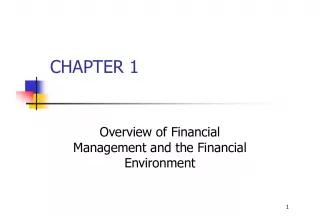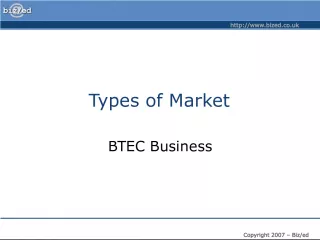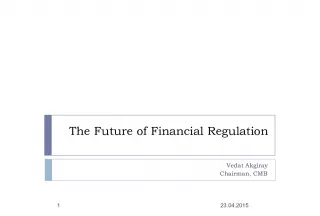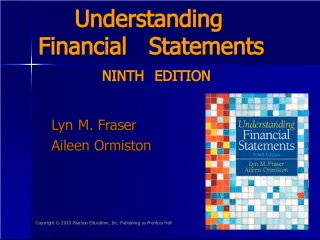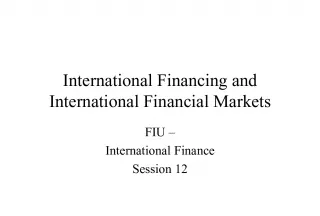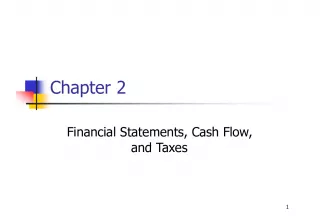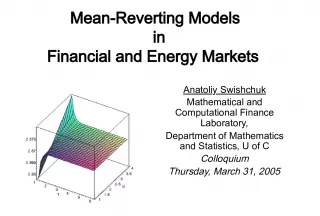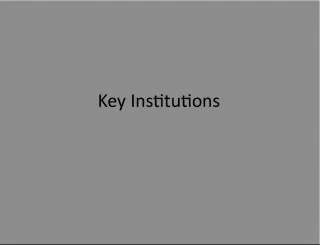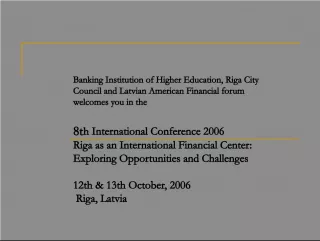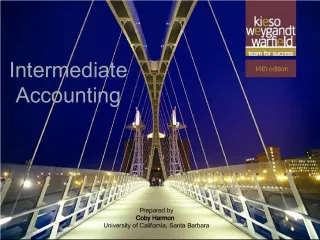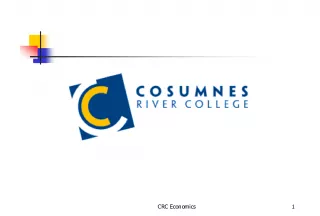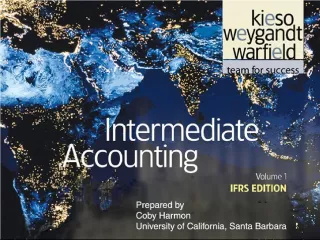Financial Markets and Institutions: Understanding their Roles


This chapter covers the basics of financial markets and institutions, including the types of markets and transactions they facilitate, the concept of security valuation, and the various types of institutions involved in these transactions.
- Uploaded on | 1 Views
-
 justin
justin
About Financial Markets and Institutions: Understanding their Roles
PowerPoint presentation about 'Financial Markets and Institutions: Understanding their Roles'. This presentation describes the topic on This chapter covers the basics of financial markets and institutions, including the types of markets and transactions they facilitate, the concept of security valuation, and the various types of institutions involved in these transactions.. The key topics included in this slideshow are . Download this presentation absolutely free.
Presentation Transcript
1. 1 Financial Markets and Institutions Leng Ling Department of Economics & Finance Georgia College & State University
2. 2 CHAPTER 1 The Role of Financial Markets and Institutions
3. 3 CHAPTER 1 OVERVIEW This Chapter will: A. describe the 3 types of financial markets that accommodate various transactions, B. introduce the concept of security valuation within financial markets, C. describe the role of financial institutions within financial markets, D. identify the types of financial institutions that facilitate transactions in financial markets.
4. Questions Why do people create financial markets? What are traded in financial markets? 4
5. 5
6. 6 Overview of Financial Markets 1. Three Types of Financial Markets a. Money versus Capital Markets b. Primary versus Secondary Markets c. Organized versus Over-the-Counter Markets
7. 7 Securities 2. Securities Traded in Financial Markets a. Money Market Securities Treasury Bill (T-bill); Commercial paper; negotiable CD by banks b. Capital Market Securities 1) Bonds and Mortgages 2) Stocks c. Derivative Securities 1) Speculation 2) Risk Management hedging
8. Question How to measure the value of a securities? 8
9. Time Value of Money 1. Receive $100 today 2. Receive $100 one year from now Would you choose 1 or 2? 9
10. Time Value of Money Money has time value People prefer receiving $100 today to receiving $100 one year from now because they place a LOWER value on cash flow received at a later date. The worth of $100 received one year from now is less than $100 received today. You cannot simply add sums of money received at different points in time. the amounts received (or paid) at different time must firstly be converted to a common basis: the same point in time 10
11. Time Value of Money If you put $100 in a bank deposit account earning 10% annually, how much will be in the account after one year? 11
12. Time Value of Money 12 Future Value Present Value Number of periods Interest rate
13. Time Value of Money 13 Solving for PV, we get
14. 14 Valuation of Securities 1. Market Pricing of Securities a. Impact of Information on Valuations Economic Industry Firm-specific
15. 15 Valuation of Securities b. Impact of Valuations on Pricing Valuation affects the supply and demand for a security
16. 16 Valuation of Securities c. Impact of the Internet on the Valuation Process More timely pricing More accurate pricing More informative pricing
17. 17 Market Efficiency When security prices fully reflect all available information, the market is said to be efficient.
18. Question Do financial markets need regulation? 18
19. 19 Financial Market Regulation a. Disclosure securities Act of 1933 Securities Exchange Act of 1934 Securities and Exchange Commission b. Regulatory Response to Financial Scandals Sarbanes-Oxley Act of 2002 c. Other Regulations
20. 20 Role of Financial Institutions 1. How Financial Markets Influence Economic Development 2. Global Integration
21. 21 Types of Financial Institutions 1. Depository Institutions a. Commercial Banks Bank of America, Citigroup, Suntrust b. Savings Institutions c. Credit Unions
22. 22 Types of Financial Institutions 2. Nondepository Financial Institutions Finance Companies: American Express, Ford Motor Mutual Funds: Fidelity, Vanguard Securities Firms: Merrill Lynch, Morgan Stanley Insurance Companies: State Farm, Allstate, CNA Pension Funds
23. Exhibit 1.4 Asset Sizes of Financial Institutions (in Billions of Dollars) Source: Board of Governors, Federal Reserve System, 2007.
24. 24 Types of Financial Institutions 1. Competition between Financial Institutions 2. Consolidation of Financial Institutions
25. Exhibit 1.6 Organizational Structure of a Financial Conglomerate
26. Question Is it true that the bigger the better? What is the tradeoff? 26
27. Summary 1. Financial markets facilitate the transfer of funds from surplus units to deficit units. 2. The valuation of a security represents the present value of future cash flows 27
28. In-class Discussion Assignment What is the story of Enron, WorldCom? What happened to their stocks? Tell me some of the regulation in Sarbanes-Oxley Act. What can you infer, tell or predict from the following statement made by WSJ analyst and investment managers 1. The price of IBM stock will not be affected by the announcement that its earnings have increased as expected. 2. The lending operations at BOA should benefit from strong economic growth. 28
